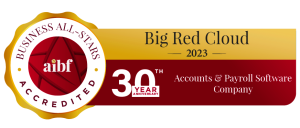Running any form of enterprise is not without its pitfalls and challenges and this is particularly true for small businesses.
Sometimes good advice is essential when it comes to key decisions – decisions around up-skilling the team or investing in technology and funding, for example, all merit serious consideration.
The UK currently has approximately 4.5 million Small to Medium Sized Enterprises (SME’s) across a wide and diverse range of industries. Some are in better shape than others, with financial pressures being a major issue for most in the current climate. All will face similar issues at one stage or another. Here we take a quick look at these three concerns;
- Funding
- Training
- Technology
Funding
Perhaps one of the most pressing and crucial concerns may be funding. Where do we get funding? How much do we need? If we get funding how will we use it? These are all common questions and it’s worth thinking these through before you approach a lender or potential investor. Try to look at the loan or investment proposition from the other party’s perspective; will they get their money back with interest or profit. Is there an alternative investment that may be more attractive? How can you match up your proposal against other options?
The most essential element of preparation is to have a strong business plan. You need to convince the lender that you are a good ‘bet’. You must be able to show the present and projected future performance of your business based on strong financial data. This is crucial. You must show the lender that you are more than capable of paying back the loan.
You also need to be aware of your current credit rating. This will be something that the bank or investor will definitely examine. Be aware of the factors that may negatively affect your credit rating (such as late payments on a credit card, going overdrawn without authorisation etc.) and try to protect your good rating where possible. When it is strong, this is a major bargaining chip as you may have choices in terms of who to borrow from. Equally it can be a possible deal-breaker when your credit rating is poor.
Analyse how much money you actually need to bring into the business. Look at all facets of your operation. Don’t borrow too little on the strength of potential capital that has yet to be generated. It will be a lot more hassle and potentially more expensive to have to go back to the bank and borrow more if the initial sum does not meet your requirements. Be realistic when estimating the sum required.
Communicate with your bank regularly regarding applications; often paperwork can slip through the cracks and it’s in your interest to be pro-active throughout the process so that you can immediately respond to any further requests for information etc. You need to be seen to be efficient throughout the procedure (even if the banks aren’t too efficient themselves!)
Finally, don’t be nervous about approaching a lender. All a bank will want to know is whether you have the ability to repay the loan you require. That’s it, no more. With this in mind, be realistic in your request and spend a good bit of time preparing for the preliminary meeting, so that you can readily demonstrate an ability to meet the terms of the loan agreement.
Training
It is important to invest in your staff, to be confident that they have the skills to deliver success for your company. Many companies put training on the long finger because they feel they do not have either the time or the budget. However badly trained staff negatively affects your business in every way.
The effects of poor employee training.
- The quality of the service/product you provide suffers.
- It creates stress in the workplace.
- It leads to low employee morale.
- Competitors may overtake you.
- Productivity is not optimised
It may be tempting to skimp on employee training when cashflow is tight and if this is the case, then see are there other options; often government funding or funding from the local council may be available to assist in the training. If the team member(s) will benefit professionally from further training perhaps he/she would be willing to contribute to the cost or he/she may be willing to do the training outside of working hours.
Make training as pleasant as possible for the employees and it is definitely best if it is not just foisted upon them. A flexible and relaxed learning approach works well. Let employee’s decide times when training suits them best – within reason. Reward employees who complete training successfully and who demonstrates new skills in a productive way. Again if financial incentives are not feasible, an extra day off work is more valuable to many. A company is only as strong as its employees after all.
Technology – Investing in Hardware & Software
Investing in new equipment such as computers and software is no longer a choice for any SME. But there are ways to embrace new technologies without breaking the bank! Rather than delay this investment to the point where productivity is badly affected, check out the options available both in local suppliers and online. Dell Outlet offers refurbished machines for example, which you can buy online significantly cheaper than new equipment and with a guarantee – other suppliers all have similar offerings. You can also look at the finance agreements available which many computer retailers offer – with payment terms typically from 1 to 3 years though be careful on the rate of interest charged; shop around.
Another area of technology you need to address is investing in a website. Many SME’s do not have a working site. This is alarming as a website can work wonders for your visibility and can serve to generate leads 24/7, sometimes without a huge amount of work on your behalf. It is in effect a silent salesperson. If you happen to have a website make sure it works for you and take measures to improve its performance, e.g. making calls to action very visible and adding fresh content regularly. Once you have a good site, you can also use social media to advertise your product or service, linking back to the site.
Even worse than not having a website is the number of companies that are not easily contactable by phone. This is so basic it barely merits being mentioned under “Technology” yet poor accessibility by phone is likely to cost an SME dearly. It’s essential to have a valid telephone number listed in the phone directory or local business guides (both printed and online). Also unless there is a good reason not to, publish your telephone number in a prominent place on your website – many people use websites purely to find telephone numbers so hiding these at the end of contact forms, for example, can be frustrating for potential customers. Don’t use a mobile phone number only as people are wary of businesses without a landline (though no doubt this will change in the future!)
Make technology your friend and don’t shy away from it. Often there is a piece of software, for example, that will automate a process you currently do manually. Also even if you have been using one software package effectively for many years – it’s always worth finding out what’s out there right now. In the past, for example, book-keeping software might sit on someone’s computer, making the files inaccessible to others.
Then the business might have upgraded the software and have it moved to a network but again the information was only available in the office. These days cloud solutions address this accessibility challenge and in the case of book-keeping, Big Red Cloud is readily accessible to the business owner (or bookkeeper) from home/abroad/the office etc. The latest accounting solutions are often an improvement on what you have so it’s worth being aware of new developments.
Go-Get Attitude
The economic landscape for SME’s may be challenging but most people who are self-employed are ready to meet any issues head-on and an informed approach helps deliver the very best result. Whatever you’ve done in the past in terms of training, technology and borrowing is history already – it’s what you’re doing next that matters!




